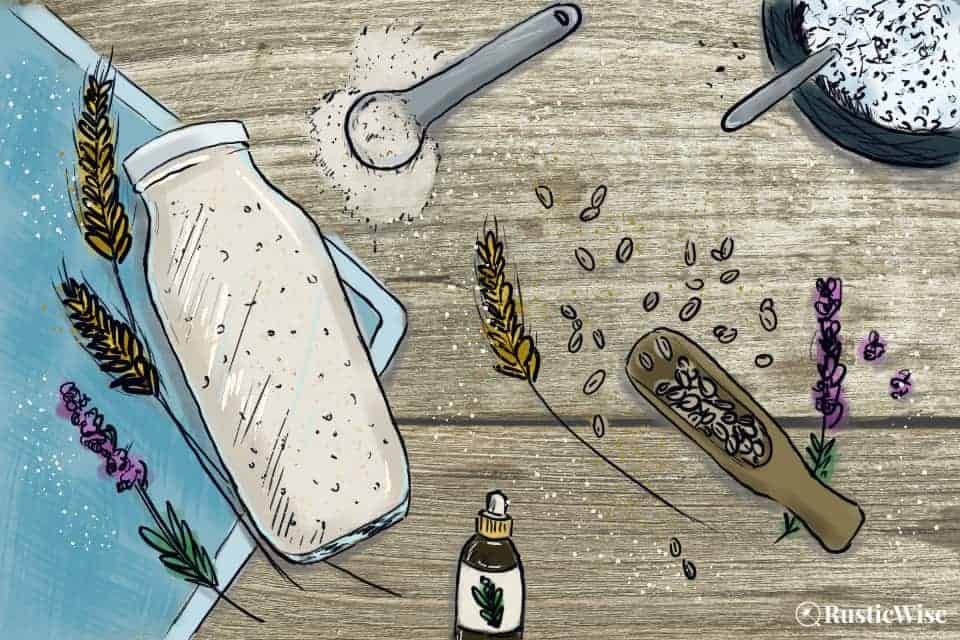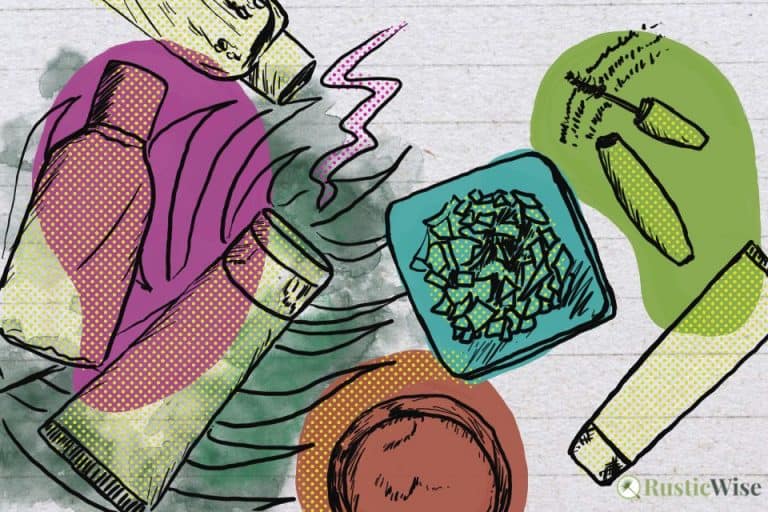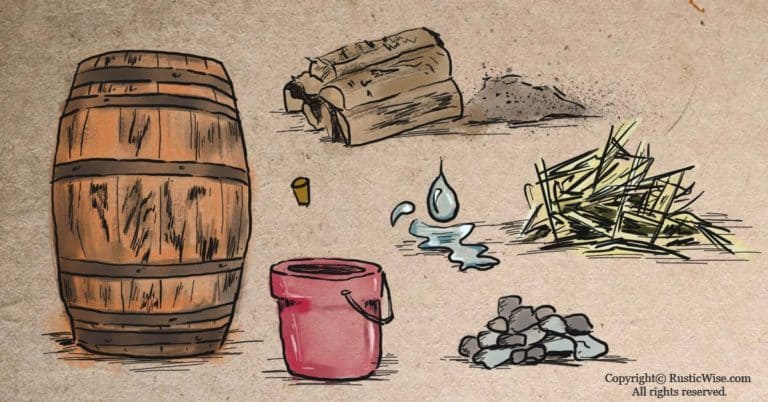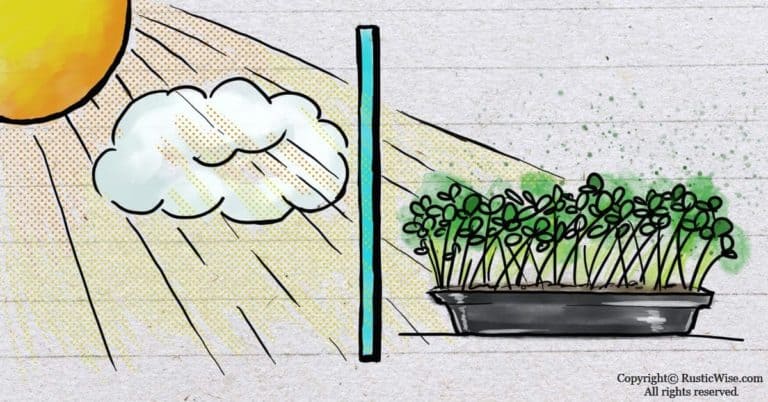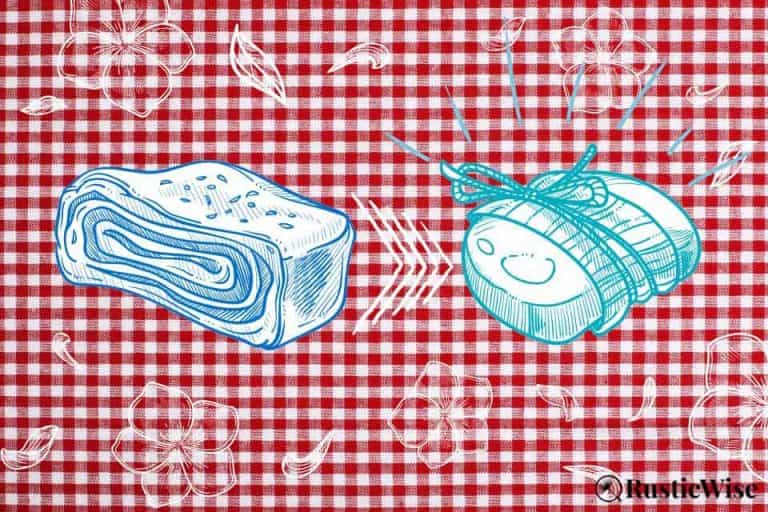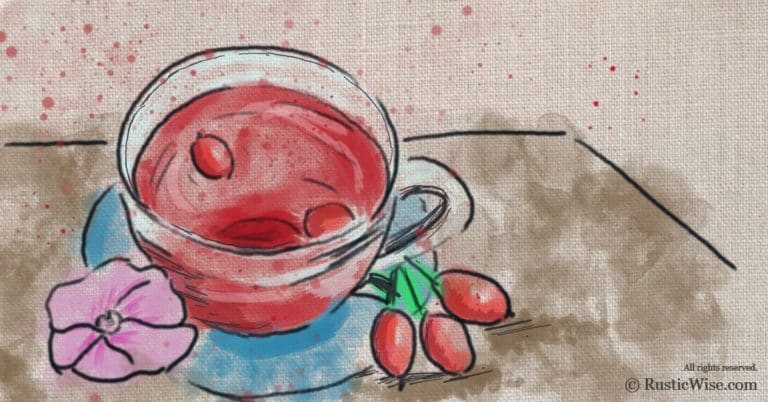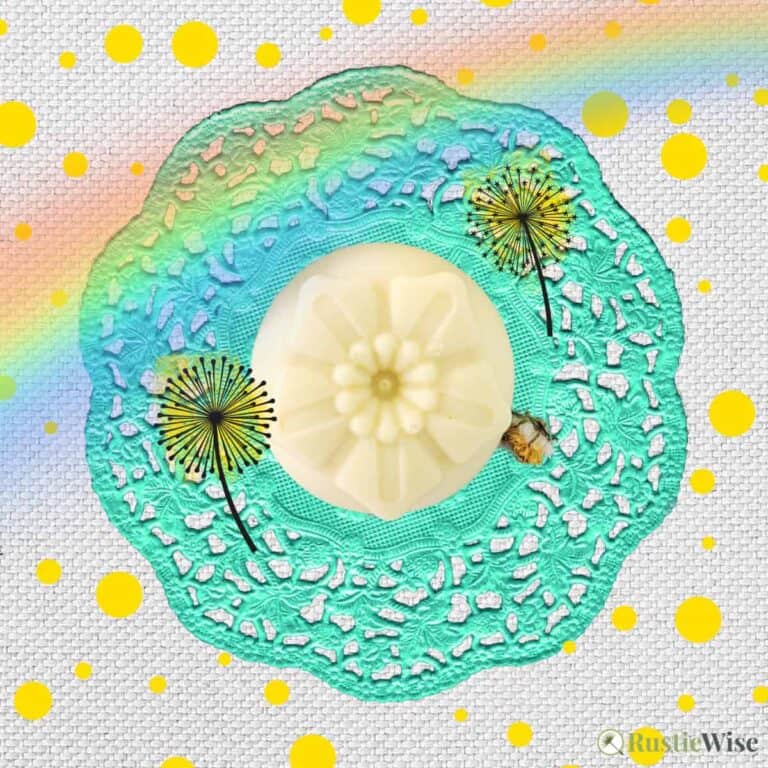The Best (Easy) Oatmeal Milk Bath Recipe
RusticWise is supported by its readers. When you purchase through links on our site, we may earn an affiliate commission. As an Amazon Associate, we earn from qualifying purchases. Thank You!
Soothing, rejuvenating, and moisturizing. What else could you ask for in a DIY bath recipe?
If you (or a loved one) have itchy, dry skin, or suffer from eczema, you can quickly whip up a batch of this easy oatmeal milk bath recipe using four natural ingredients: colloidal oatmeal, powdered milk, baking soda, and Dead Sea salts.
Colloidal oatmeal soothes itchiness, while the lactic acid in milk provides gentle exfoliating and moisturizing properties. Baking soda also reduces itchiness and Dead Sea salts bump up the relaxation quotient.
You can easily customize this recipe with your favorite soothing essential oils and dried botanicals. Let’s get started!
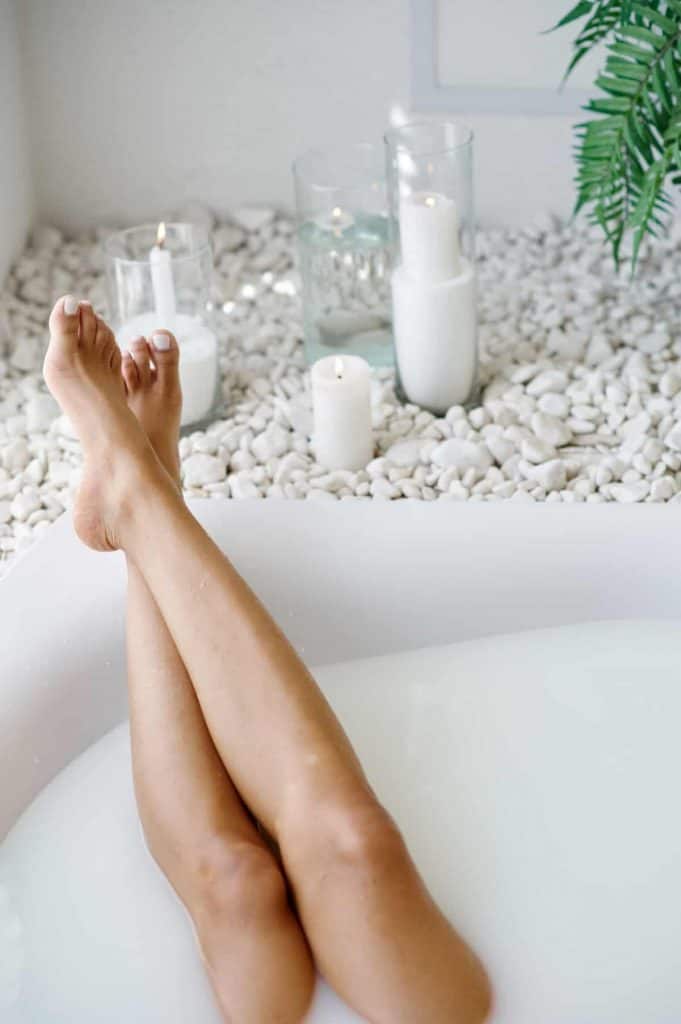
Benefits of an oatmeal milk bath
Why use oatmeal and milk for your skin? There are few things more bothersome than irritated skin.
Whether you’re in the midst of a dry, cold winter, or have eczema, this recipe combines soothing natural ingredients that are a balm for parched, itchy skin.
Let’s take a closer look at the ingredients in this DIY oatmeal milk bath recipe.
Oatmeal (colloidal oats)
While there are many types of oats, this recipe calls for colloidal oats.
Both the National Eczema Association and the American Academy of Dermatology Association (AAD) recommend colloidal oatmeal as a natural remedy for soothing itchy skin. Those with eczema and atopic dermatitis, in particular, can reap the benefits of soothing oats in baths.¹
So, what exactly is colloidal oatmeal?
Colloidal oatmeal is simply oats that are ground into a fine powder and dissolves easily in water.
You can buy packaged colloidal oatmeal at most health and beauty stores. Or, you can make your own using raw oats you have at home (steel-cut oats, ground oats, or quick-cook oats all work fine). More details on this below!
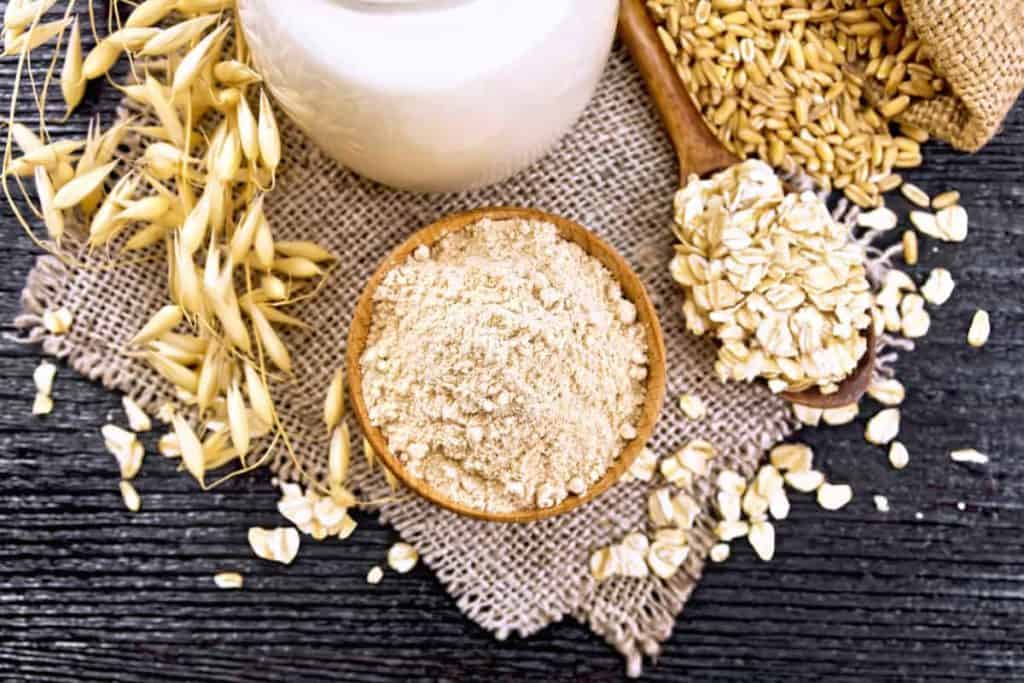
Powdered milk
While you can easily use milk straight from the fridge (or canned milk), using powdered milk provides a longer shelf life.
And when it comes to getting the most of out of milk for its skin nourishing properties, the fatter the better. Skip the skim milk varieties, and opt for whole milk if possible.
Whole milk is a richer source of healthy fatty acids which moisturize and nourish dry skin.
Milk contains lactic acid, which acts as a gentle cleanser and exfoliator.
You can customize this recipe using whatever type of powdered milk you have on hand:
- Regular whole fat milk powder
- Goat milk powder
- Coconut milk powder
Baking soda
Regular baking soda (aka sodium bicarbonate) is a natural ingredient you probably have at home.
The National Eczema Association says that adding a quarter-cup of baking soda to a bath can reduce itchiness. Alternatively, you can make a baking soda paste and apply it directly to problem areas.²
Dead Sea salt
Rich in magnesium, this is no ordinary salt.
One study found that bathing in a solution of Dead Sea salt helped to minimize skin inflammation, boost hydration, and repair the skin barrier function.³
Participants in the study had atopic dry skin. Those who used Dead Sea salt had noticeably smoother skin with reduced dryness.
You can sometimes find Dead Sea salt online or at Walmart.
The difference between colloidal oatmeal and ground oats
The term ‘colloidal oatmeal’ confuses many. The main difference between colloidal oatmeal and ground oats is their final texture. Colloidal oats are a fine powder that easily dissolves in water while ground oats are more coarsely ground.
How to make your own colloidal oatmeal
Don’t have any colloidal oatmeal on hand? No worries. It’s a cinch to make your own.
You can simply start with any plain, raw oats such as steel-cut oats, quick oats, or ground oats. You’ll need either a food processor, blender, or coffee grinder. If you don’t have any of these, you could use a mortar and pestle, but this will require some elbow grease!
- Add 1 cup of plain, raw oats to a food processor, blender, or coffee grinder.
- Pulse or blend until the oats become a finely ground powder. It should have a uniform consistency and dissolve easily in water.
Tip: To test if your oats are “done” dissolve a small amount into a glass of lukewarm water. If the oats dissolve and the water turns creamy white, you’re done! If the oats are too large, they will sink to the bottom—you’ll need to continue pulsing.
Safety notes on oatmeal milk baths
- Those with dairy allergies may want to avoid using cow’s milk or goat’s milk products. Powdered coconut milk can be used as an alternative.
- Allergic reactions to oatmeal are very rare, however if you have an oat allergy, it’s best to avoid using colloidal oatmeal.
- For those with sensitive skin, do a quick patch test. Mix a small amount of colloidal oats with water and apply to a small patch of skin on the forearm. Leave for at least 15–20 minutes, then rinse off. Monitor for signs of redness, or itchiness.
- Take care when stepping out of the bathtub following your relaxing oat milk bath. The oats can make the tub very slippery!
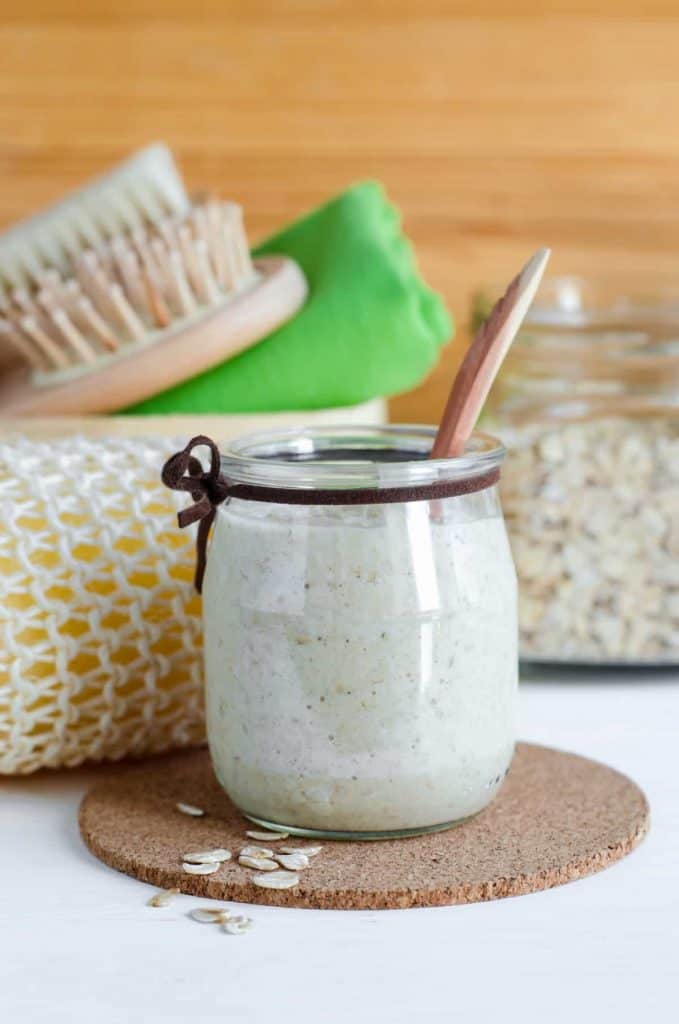
Easy oatmeal milk bath recipe
This DIY oatmeal milk bath recipe is perfect for a relaxing, moisturizing, and soothing soak at the end of the day. Double, triple, or quadruple the recipe for gifts for family and friends.
This recipe is easy to customize to your personal taste. Use coconut milk powder for a vegan-friendly version. Substitute Dead Sea salt with Epsom salts. Add a few drops of your favorite essential oils, or leave unscented. Stir in dried botanicals such as flower buds.
Milk options:
- Powdered whole milk
- Powdered goat’s milk
- Powdered coconut milk
Essential oils ideas:
For those with very sensitive skin, you may prefer to skip any scents altogether. Or, if you prefer to add a fragrance, here are a few ideas.
- Lavender essential oil: You can’t go wrong with the calming scent of this popular EO. Lavender EO has antimicrobial and antiseptic properties that soothe and heal broken skin.
- Geranium essential oil: Smells similar to rose but with herbaceous notes.
- Chamomile essential oil: Just like a cup of chamomile tea, the distilled oil of the plant also offers soothing properties. German chamomile is blue while Roman varieties are pale yellow.
Optional add-ins:
- Dried botanicals such as lavender flowers, or calendula petals, add a splash of color and light fragrance.
Tip: If you’re using botanicals fresh from your garden, ensure they are 100 percent dry before adding to your mixture. Any moisture will shorten the shelf life of your recipe!
Yield: This recipe makes enough for approximately three baths
Supplies you’ll need:
- Blender, food processor or coffee grinder
- Large mixing bowl
- Wooden spoon to mix with
- A sealable container such as a glass mason jar
Ingredients:
- 1 cup colloidal oatmeal
- 1 cup powdered milk of your choice
- 1 cup Dead Sea salts
- 1/2 cup baking soda
- Optional: 10 to 20 drops of an essential oil of your choice
- Optional: 4 to 5 tablespoons of dried botanicals
- Make your colloidal oatmeal. If you’re starting with packaged colloidal oats, skip this step! Otherwise, measure oats into food processor, blender, or grinder and pulse until the consistency is like a fine powder.
- Combine dry ingredients. In a large bowl, combine the colloidal oatmeal, powdered milk, salts, and baking soda together.
- Add essential oils (optional). Add the essential oils and mix until no clumps remain.
- Add dried botanicals (optional). Finally, stir in your dried botanicals.
To use your homemade bath mixture, scoop out 1 heaping cup into bath water. Gently swirl with your hands to mix.
Soak for 10 to 15 minutes.
Do you rinse off after an oatmeal bath?
Yes, follow up with a quick rinse in lukewarm water to rinse off any sticky residue that may remain on skin from the oats or milk. Avoid using any soap or scrubbing to allow the nutrients of the bath to remain on your skin.
How to store your DIY oatmeal milk bath recipe
Store your homemade oat and milk bath powder in an air-tight container away from direct heat and sunlight. It should last anywhere from 3 to 5 months.
Avoid getting it wet!
Bathing tips for those with sensitive skin
For those with sensitive skin, avoid using hot water, which can irritate skin and dry it out.
For young children and babies, use lukewarm water. The National Eczema Association recommends the Soak and Seal Method:²
- Soak in lukewarm water for 10 to 15 minutes. Avoid scrubbing the skin or using harsh cleaners.
- Dry off by gently patting skin to allow some moisture to remain on skin.
- Apply topical creams to problem areas.
- Seal in moisture by applying moisture within 3 minutes to the entire body.
Would you like more timeless tips via email?
Fun tips to help you live an independent, self-sustaining lifestyle. Opt-out at any time.


References
- American Academy of Dermatology Association (AAD), HOME REMEDIES: WHAT CAN RELIEVE ITCHY ECZEMA?https://www.aad.org/public/diseases/eczema/childhood/itch-relief/home-remedies. Accessed July 2022.
- National Eczema Association, Eczema and Bathing, https://nationaleczema.org/eczema/treatment/bathing/. Accessed July 2022.
- Proksch, E., Nissen, H. P., Bremgartner, M., & Urquhart, C. (2005). Bathing in a magnesium-rich Dead Sea salt solution improves skin barrier function, enhances skin hydration, and reduces inflammation in atopic dry skin. International journal of dermatology, 44(2), 151–157. https://doi.org/10.1111/j.1365-4632.2005.02079.x

Author: Theresa Tesolin
Theresa is co-founder of RusticWise. She helps people unleash their inner DIY spirit by encouraging them to get dirty and make or grow something from scratch.

